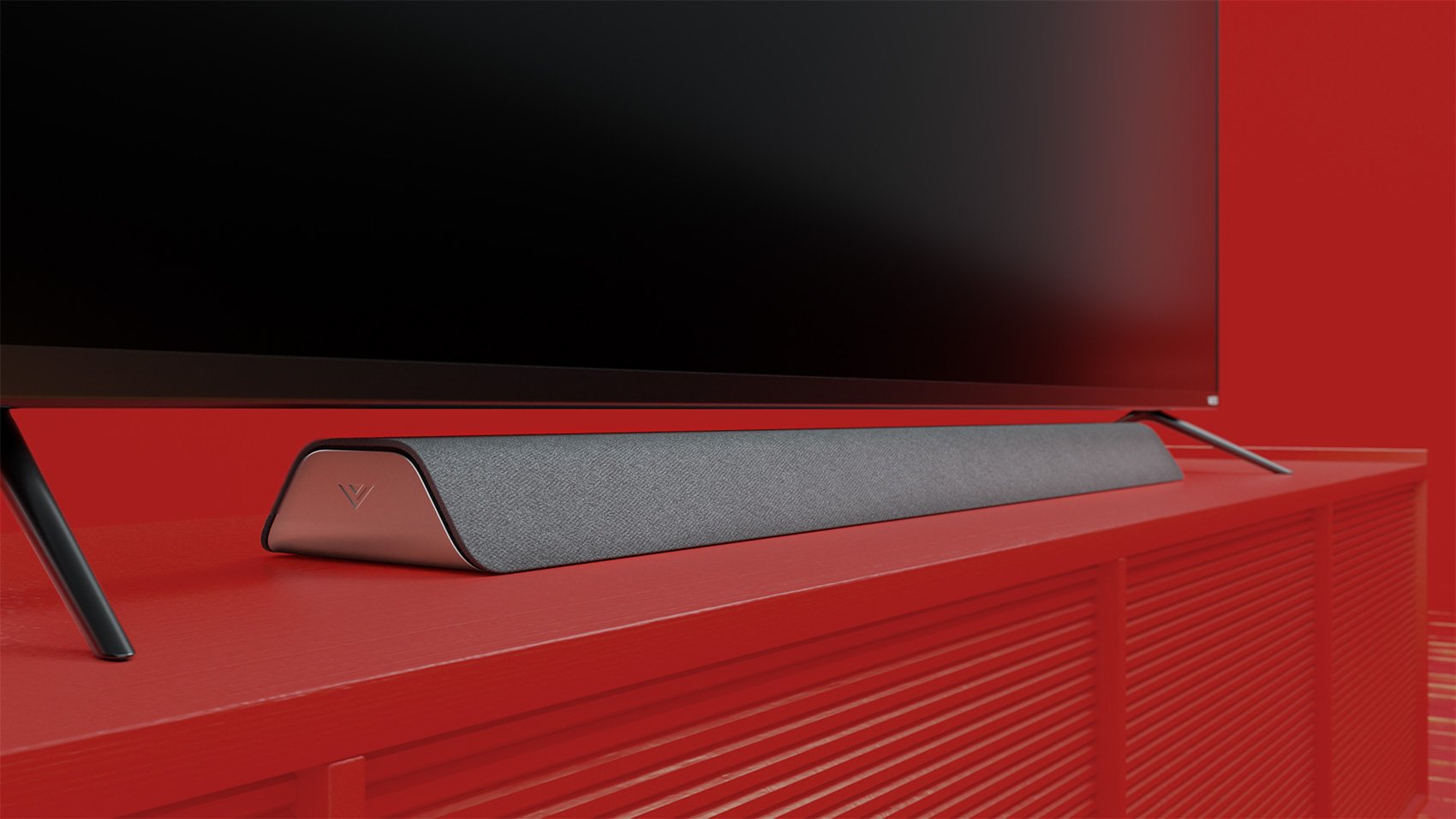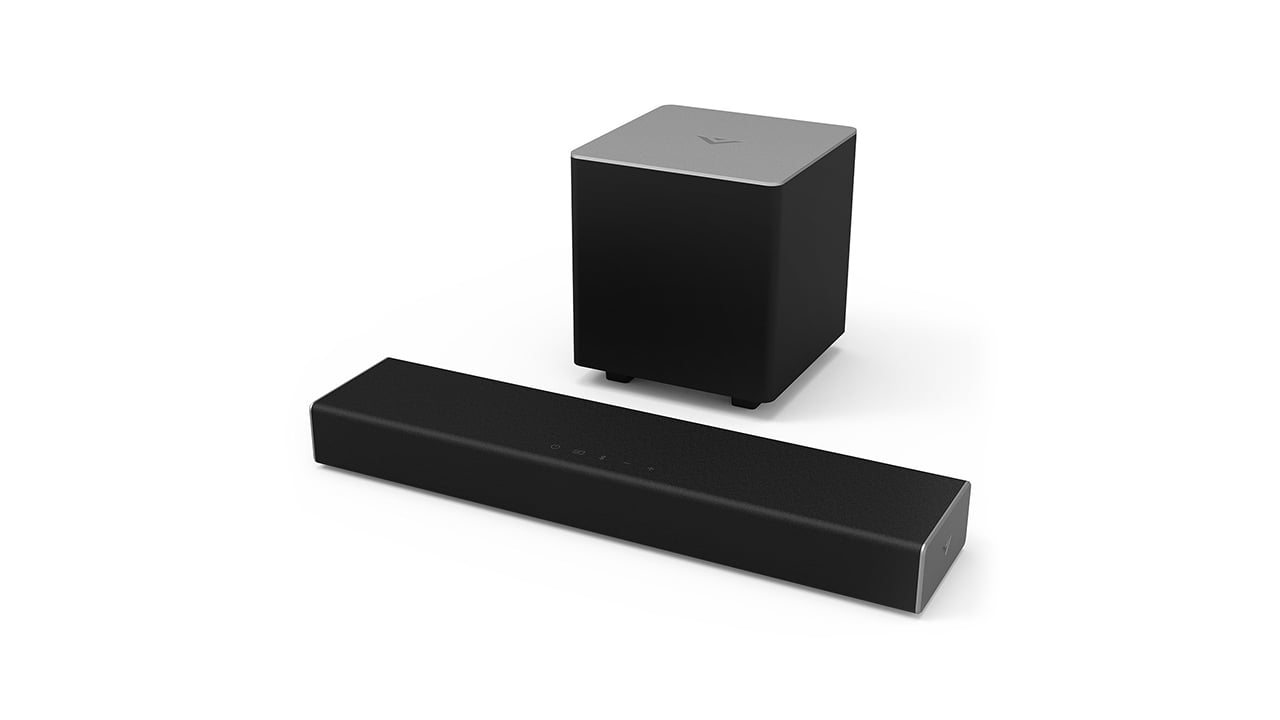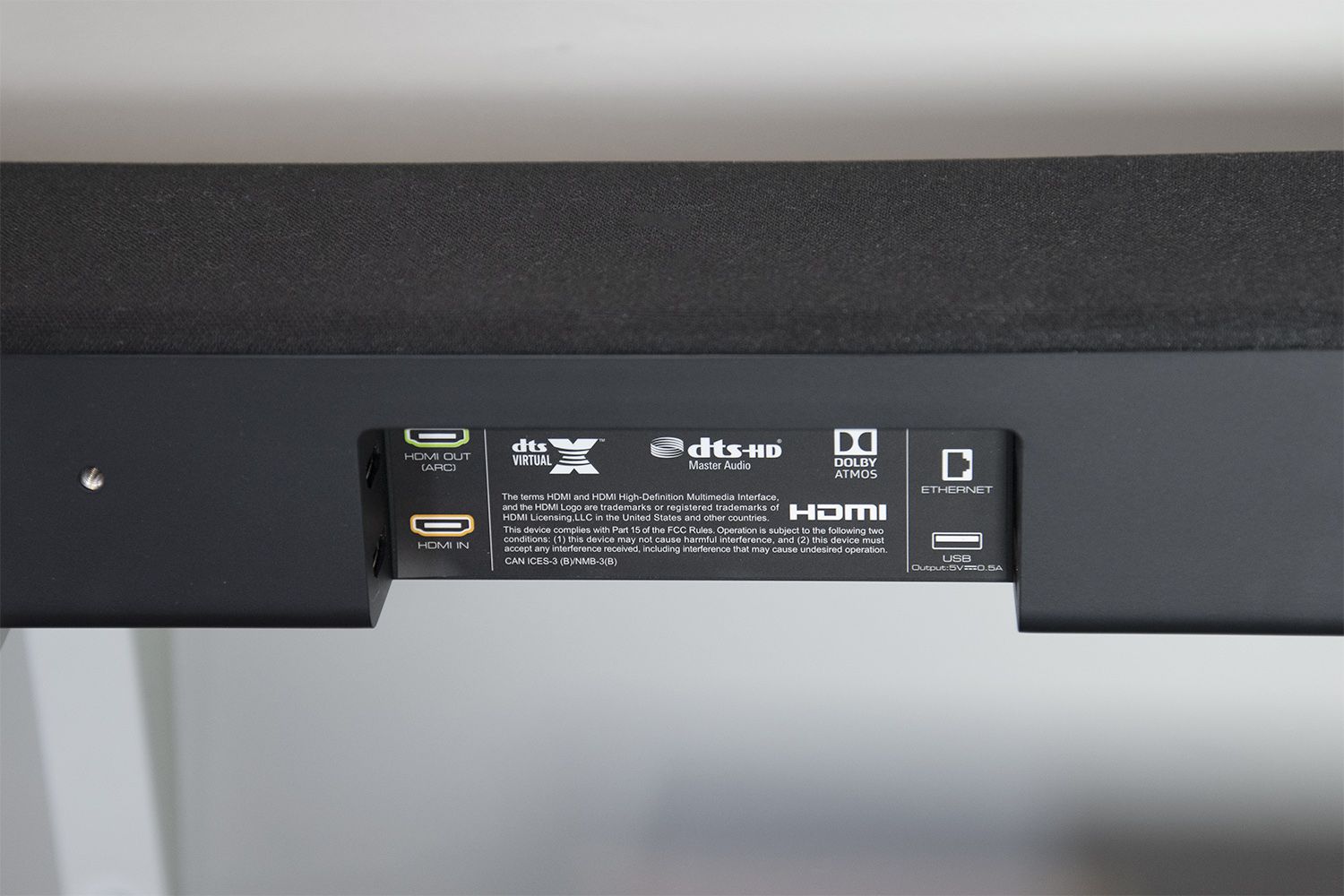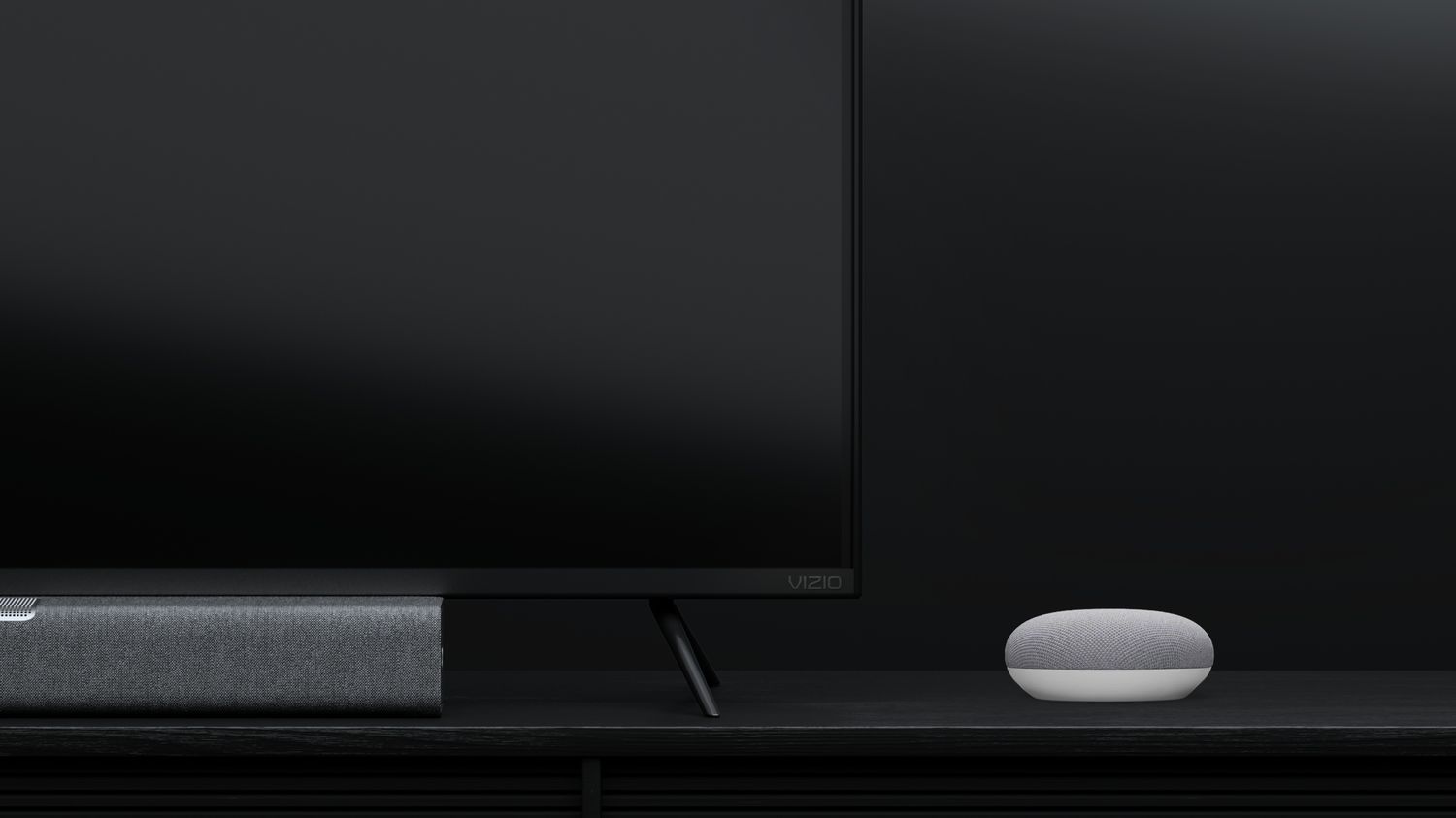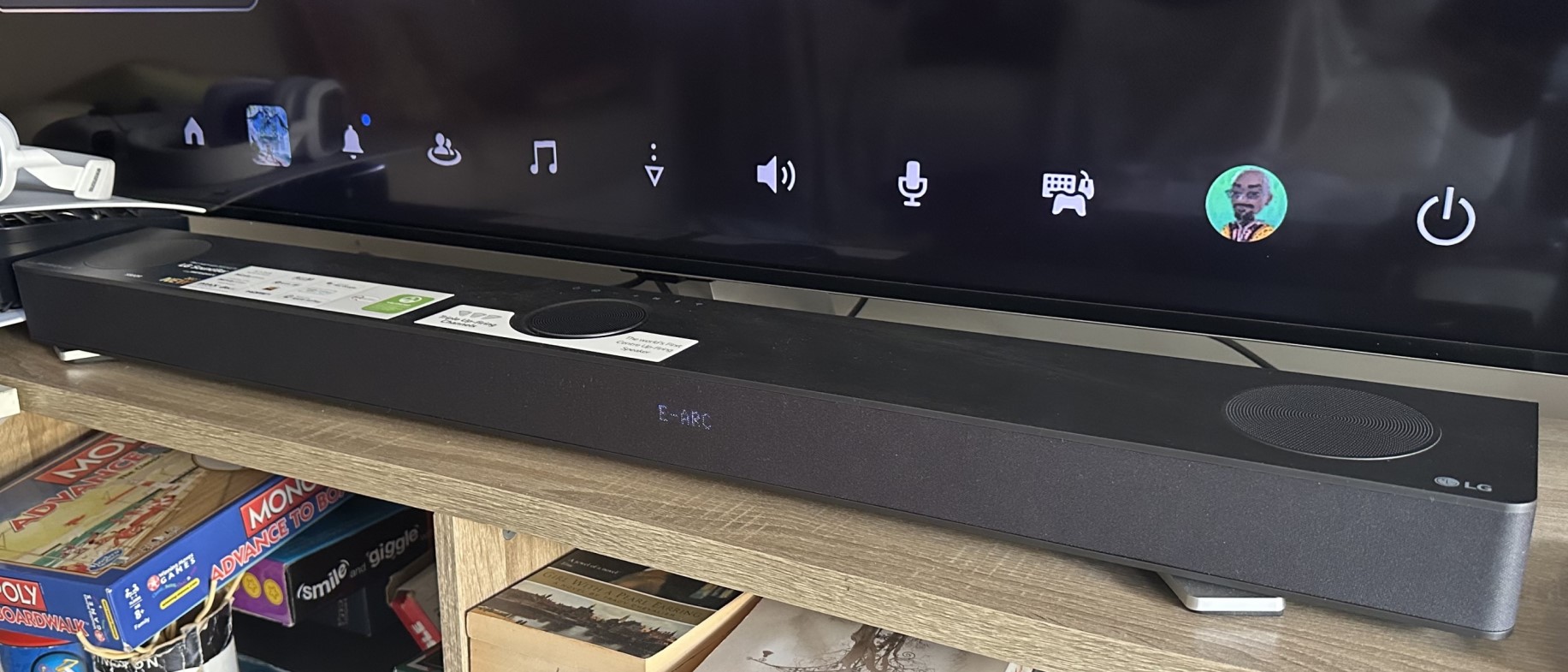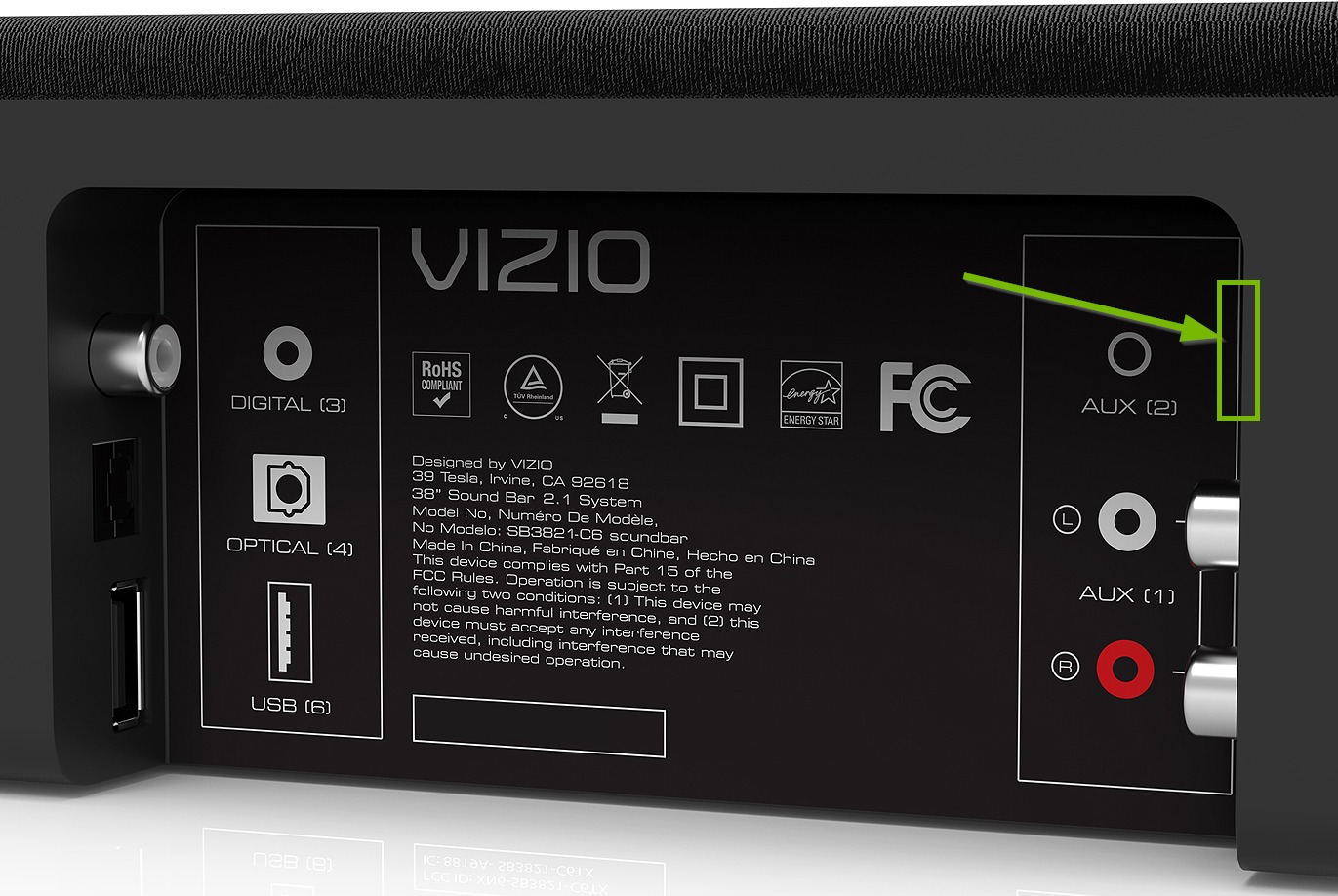Home>Production & Technology>Sound Bar>Why Is Vizio Sound Bar Not Working


Sound Bar
Why Is Vizio Sound Bar Not Working
Modified: January 22, 2024
Having trouble with your Vizio sound bar? Find out why it's not working and how to fix it with our comprehensive troubleshooting guide.
(Many of the links in this article redirect to a specific reviewed product. Your purchase of these products through affiliate links helps to generate commission for AudioLover.com, at no extra cost. Learn more)
Table of Contents
- Introduction
- Common issues with Vizio sound bar
- Troubleshooting steps for Vizio sound bar not working
- Checking the power supply and connections
- Adjusting the sound settings on Vizio sound bar
- Resetting the Vizio sound bar
- Updating the firmware
- Checking for audio output settings on the connected device
- Contacting Vizio customer support
- Conclusion
Introduction
Welcome to our comprehensive guide on troubleshooting common issues with Vizio sound bars. Sound bars have become increasingly popular in recent years due to their sleek design and ability to deliver high-quality audio. However, like any electronic device, sound bars can sometimes encounter problems that prevent them from working properly. If you’re facing issues with your Vizio sound bar, you’re in the right place.
In this article, we will explore some of the most common issues that can occur with Vizio sound bars and provide step-by-step troubleshooting solutions. Whether you’re experiencing sound distortion, audio dropout, connectivity problems, or any other issue, we aim to help you resolve it and get your sound bar working flawlessly again. We will cover everything from checking power supply and connections to adjusting sound settings, resetting the sound bar, updating firmware, and more.
By following the troubleshooting steps outlined in this guide, you can save time and money by potentially resolving the issue without the need for professional assistance or replacement of your Vizio sound bar. So, let’s dive in and get your sound bar up and running!
Common issues with Vizio sound bar
Vizio sound bars are known for their excellent sound quality and user-friendly features. However, like any electronic device, they can encounter a few common issues. Understanding these issues can help you troubleshoot and resolve them effectively. Here are some of the most common problems that users face with Vizio sound bars:
- No sound: One of the most frustrating issues is when the sound bar produces no audio. This can happen due to various reasons, such as incorrect audio settings, faulty connections, or a malfunctioning sound bar.
- Sound distortion: Another common issue is sound distortion, where the audio coming from the sound bar is not clear or is accompanied by crackling or buzzing noises. This can be caused by a weak or faulty signal from the source device, improper audio settings, or speaker damage.
- Audio dropout: Some users experience audio dropping out intermittently while using their Vizio sound bars. This can be due to wireless interference, outdated firmware, or an issue with the audio source.
- Connectivity problems: Vizio sound bars can sometimes have trouble establishing and maintaining a stable connection with other devices, such as TVs, smartphones, or computers. This can result in audio interruptions or no sound at all.
- Remote control issues: If the remote control for your Vizio sound bar is not responding or working erratically, it can be frustrating. This can be caused by battery issues, signal interference, or a problem with the remote itself.
These are just a few examples of the common issues that can occur with Vizio sound bars. While they can be frustrating, the good news is that most of these problems can be resolved through basic troubleshooting steps. In the following sections, we will walk you through the troubleshooting process to help you identify and fix these issues, so you can enjoy your Vizio sound bar to its full potential.
Troubleshooting steps for Vizio sound bar not working
If your Vizio sound bar is not working, there are several troubleshooting steps you can take to identify and resolve the issue. Before diving into the troubleshooting process, it’s important to ensure that you have followed the basic setup instructions, such as connecting the sound bar to a power source and the audio output of your TV or other devices.
Here are some troubleshooting steps you can follow to get your Vizio sound bar working again:
- Check the power supply and connections: Ensure that the sound bar is properly plugged into a functioning power outlet and that all the necessary cables are securely connected. A loose or faulty power connection can prevent the sound bar from working.
- Verify the audio input source: Make sure that the sound bar is set to the correct audio input source. If you’re using an optical or HDMI connection, ensure that the corresponding input is selected on the sound bar.
- Adjust the sound settings on the sound bar: Use the remote control or buttons on the sound bar to access the sound settings menu. Check the volume level, bass, treble, and any other sound-enhancing settings to ensure they are properly configured.
- Reset the sound bar: Sometimes, performing a hard reset can resolve software glitches or other minor issues. Refer to the user manual for instructions on how to reset your specific Vizio sound bar model.
- Update the firmware: Outdated firmware can cause compatibility issues and impact the performance of your sound bar. Visit the Vizio support website and check for any available firmware updates for your sound bar model. Follow the instructions provided to update the firmware.
- Check for audio output settings on the connected devices: Ensure that the audio output settings on your TV or other connected devices are properly configured. Some devices may have specific audio output settings that need to be adjusted for compatibility with the sound bar.
- Contact Vizio customer support: If you have exhausted all troubleshooting steps and your Vizio sound bar is still not working, it may be necessary to contact Vizio customer support. They can provide further assistance and guide you through additional troubleshooting steps or initiate a repair or replacement if needed.
By following these troubleshooting steps, you can hopefully resolve the issue with your Vizio sound bar and enjoy immersive audio once again. Remember to consult the user manual or contact Vizio support for specific instructions tailored to your sound bar model.
Checking the power supply and connections
When troubleshooting a Vizio sound bar that is not working, one of the first steps is to check the power supply and connections. A loose or faulty power connection can prevent the sound bar from turning on or producing sound. Follow these steps to ensure that the power supply and connections are properly configured:
- Verify the power source: Ensure that the sound bar is plugged into a functioning power outlet. Check if the power outlet is receiving power by plugging in another device or using a power tester.
- Inspect the power cable: Check the power cable for any visible damage or frayed wires. If any damage is found, replace the power cable with a new one that is compatible with your Vizio sound bar.
- Check the power adapter: If your Vizio sound bar uses a power adapter, ensure that it is plugged into a power outlet and securely connected to the sound bar. Confirm that the power adapter is the correct one provided by Vizio for your sound bar model.
- Inspect the audio cables: If your sound bar is connected to an audio source like a TV or a set-top box, check the audio cables for any damage or loose connections. Make sure that the cables are securely plugged into their respective ports on both the sound bar and the audio source.
- Try a different cable: If you suspect that the audio cable is causing the issue, try using a different cable. Sometimes, a faulty cable can disrupt the audio signal and prevent the sound bar from working properly.
- Reset the connections: Sometimes, a simple reset can fix connection issues. Disconnect all cables from the sound bar and the audio source, wait for a few minutes, and then reconnect them. Ensure that the connections are firm and tight.
- Test with a different power outlet: In some cases, the power outlet itself may be faulty. Plug the sound bar into a different power outlet and see if it powers on. This will help determine if the original power outlet is the cause of the problem.
By thoroughly checking the power supply and connections, you can eliminate any potential issues caused by a faulty power source or improper cable connections. If the sound bar still doesn’t work after verifying these aspects, proceed to the next troubleshooting step.
Adjusting the sound settings on Vizio sound bar
When troubleshooting a Vizio sound bar that is not working properly, it’s essential to check and adjust the sound settings. Incorrectly configured sound settings can result in distorted audio, low volume levels, or other sound-related issues. Here are the steps to adjust the sound settings on your Vizio sound bar:
- Access the sound bar’s menu: Use the remote control that came with your Vizio sound bar or the buttons on the sound bar itself to access the menu or settings.
- Adjust volume control: Increase the volume level to ensure that it is not set too low. Keep in mind that different sound bars have different volume controls, so refer to the user manual if you’re unsure how to adjust the volume.
- Manage bass and treble: Many Vizio sound bars provide options to adjust the bass and treble levels. Experiment with these settings to achieve the desired audio balance. Adjust the levels based on your personal preferences and the content you’re listening to.
- Enable virtual surround sound: If your Vizio sound bar has a virtual surround sound feature, consider enabling it for a more immersive audio experience. This can create a wider soundstage and enhance the overall audio quality.
- Check for audio mode settings: Some Vizio sound bars offer different audio modes, such as movie, music, or dialogue modes. These modes optimize the sound output for specific types of content. Experiment with different modes to see which one suits your preferences and the content you’re currently playing.
- Ensure proper input selection: If your sound bar has multiple input options (e.g., HDMI, optical, or Bluetooth), make sure that the correct input source is selected. Use the remote control or buttons on the sound bar to switch between different input options until you hear sound from the desired source.
Adjusting the sound settings can significantly improve the audio performance of your Vizio sound bar. Take the time to experiment with different settings and find the optimal configuration for your listening preferences. If the sound bar still doesn’t work properly after adjusting the sound settings, proceed to the next troubleshooting step.
Resetting the Vizio sound bar
If you’ve encountered persistent issues with your Vizio sound bar and the previous troubleshooting steps haven’t resolved the problem, performing a reset may help. Resetting the sound bar can often fix software glitches and restore it to its default settings. Here’s how to reset your Vizio sound bar:
- Locate the reset button: Look for a small reset button on the back or bottom of the sound bar. It is typically recessed and may require a pin or a paperclip to press it.
- Power off the sound bar: Make sure the sound bar is turned off by either switching it off using the power button or unplugging it from the power outlet.
- Press and hold the reset button: Using a pin or a paperclip, press and hold the reset button for about 15 seconds. Keep it pressed until you see the indicator lights on the sound bar flash or the sound bar resets itself.
- Release the reset button: After holding the reset button for the specified time, release it and wait for the sound bar to complete the reset process. This may take a few moments.
- Power on the sound bar: Once the reset process is complete, turn on the sound bar and check if the issue has been resolved.
It’s important to note that performing a reset will erase any custom settings and configurations on the sound bar. After the reset, you will need to set up the sound bar again and adjust the necessary settings as per your preference.
If the reset process doesn’t resolve the issue with your Vizio sound bar, you may need to proceed to further troubleshooting steps or contact Vizio customer support for assistance. They can provide additional guidance or recommend further actions to resolve the problem.
Updating the firmware
Updating the firmware of your Vizio sound bar can often resolve compatibility issues, software bugs, and improve overall performance. Firmware updates provide the latest enhancements and fixes released by Vizio specifically for your sound bar model. Here’s how you can update the firmware on your Vizio sound bar:
- Check for firmware updates: Visit the Vizio support website and navigate to the firmware download section. Look for firmware updates available for your specific sound bar model. Ensure that you download the correct firmware file.
- Prepare a USB drive: Insert a USB drive into your computer. Format the USB drive to FAT32 file system to ensure compatibility.
- Download and transfer the firmware: Download the firmware file from the Vizio support website onto your computer. Copy the firmware file to the root directory of the USB drive.
- Disconnect the sound bar: Disconnect the power cable from the sound bar and wait for about 30 seconds.
- Insert the USB drive: Insert the USB drive containing the firmware file into the USB port on the sound bar. You may need to refer to the user manual to locate the USB port.
- Power on the sound bar: Reconnect the power cable to the sound bar and wait for it to power on. The firmware update process should start automatically.
- Do not power off: It is crucial not to turn off the sound bar or disconnect the power during the firmware update process. Doing so can result in firmware corruption or other issues.
- Wait for the update to complete: Allow the sound bar to complete the firmware update process. This may take a few minutes. The sound bar may restart multiple times during the update.
- Remove the USB drive: Once the firmware update is complete, remove the USB drive from the sound bar.
- Verify the firmware update: Go to the sound bar’s settings or menu and check the firmware version to ensure that it has been updated successfully.
Updating the firmware of your Vizio sound bar can often resolve software-related issues and improve its functionality. If the problem persists even after updating the firmware, it may be necessary to explore further troubleshooting steps or contact Vizio customer support for assistance.
Checking for audio output settings on the connected device
When troubleshooting a Vizio sound bar that is not producing sound or experiencing audio issues, it’s important to check the audio output settings on the connected device. The audio settings on your TV, computer, or other devices can impact the compatibility and performance of the sound bar. Here’s how to check the audio output settings:
- Access the device settings: Using the remote control or on-screen menus, navigate to the settings or setup menu of the device that is connected to the sound bar.
- Select audio settings: Locate the audio or sound settings within the device settings menu. This may be labeled as Audio, Sound, or similar.
- Verify the audio output: Check which audio output option is currently selected. It is usually labeled as HDMI, optical, or audio out. Ensure that the correct output option is selected for the connection you are using with the Vizio sound bar.
- Check for audio format settings: Some devices offer audio format settings, such as Dolby Digital, DTS, or stereo. Ensure that the audio format selected matches the capabilities of your Vizio sound bar. If you’re unsure, it’s safe to choose a regular stereo or PCM format.
- Adjust volume and audio levels: Within the audio settings, check the volume level and audio balance. Ensure that the volume is not set too low or muted. Adjust the audio levels as per your preference.
- Test with another audio source: If possible, connect your Vizio sound bar to a different device, such as a smartphone or tablet, to determine if the issue is specific to the original device or the sound bar itself.
By checking and adjusting the audio output settings, you can ensure that the connected device is properly configured to work with your Vizio sound bar. If the issue with the sound bar persists, you may need to proceed to additional troubleshooting steps or contact Vizio customer support for further assistance.
Contacting Vizio customer support
If you have followed all the troubleshooting steps and your Vizio sound bar is still not working, it may be time to reach out to Vizio customer support for assistance. Vizio has a dedicated customer support team that can provide further guidance and help resolve the issue. Here are the steps to contact Vizio customer support:
- Visit the Vizio support website: Go to the Vizio support website and navigate to the “Contact Us” or “Support” section. Look for the available contact options.
- Choose your preferred contact method: Vizio provides various contact methods, including phone support, live chat, and email. Select the method that works best for you.
- Provide necessary details: Prepare the necessary information about your Vizio sound bar, such as the model number, serial number, and a detailed description of the issue you’re facing. This will help the customer support representative understand your situation better.
- Reach out to customer support: Initiate contact with Vizio customer support using your preferred method. Be sure to clearly and concisely explain the issue you’re experiencing and the steps you’ve already taken to troubleshoot.
- Follow the instructions: Listen to or read the instructions provided by the customer support representative and follow them accordingly. They may guide you through additional troubleshooting steps or provide information on how to proceed with a repair or replacement.
- Keep your proof of purchase handy: If your sound bar is still under warranty, have your proof of purchase ready to provide the necessary details to validate your warranty coverage.
- Document the support interaction: Take notes during your conversation with customer support, including the representative’s name, case number, and any troubleshooting steps or instructions provided. This will be helpful for future reference.
Contacting Vizio customer support is often the best course of action when all other troubleshooting steps have been exhausted. They have the expertise to provide personalized assistance and can potentially offer solutions or arrange for a repair or replacement, depending on the warranty coverage and the nature of the issue you’re facing.
Remember to be patient and polite when interacting with customer support, as they are there to assist you and help resolve the problem with your Vizio sound bar.
Conclusion
Sound bars have revolutionized the way we experience audio, and Vizio is a well-known brand that offers impressive sound quality and performance. However, it’s not uncommon to encounter issues with your Vizio sound bar that can disrupt your audio experience. The good news is that many of these issues can be resolved through basic troubleshooting steps.
In this comprehensive troubleshooting guide, we covered common issues with Vizio sound bars and provided step-by-step solutions. We explored checking the power supply and connections, adjusting sound settings, resetting the sound bar, updating the firmware, checking audio output settings on connected devices, and contacting Vizio customer support.
By following these troubleshooting steps, you can often diagnose and resolve the issues with your Vizio sound bar. Always ensure that you have checked the power supply and connections, adjusted the sound settings, and verified the audio output settings on the connected devices. In case of persistent problems, a reset or firmware update may be necessary. And if all else fails, don’t hesitate to reach out to Vizio customer support for further assistance.
Remember, troubleshooting your Vizio sound bar is a step-by-step process, and it’s important to be patient and thorough. By doing so, you can enjoy the immersive and high-quality audio that your Vizio sound bar is designed to deliver.
We hope this guide has been helpful in troubleshooting your Vizio sound bar issues. May you now enjoy exceptional audio experiences with your sound bar for years to come!


